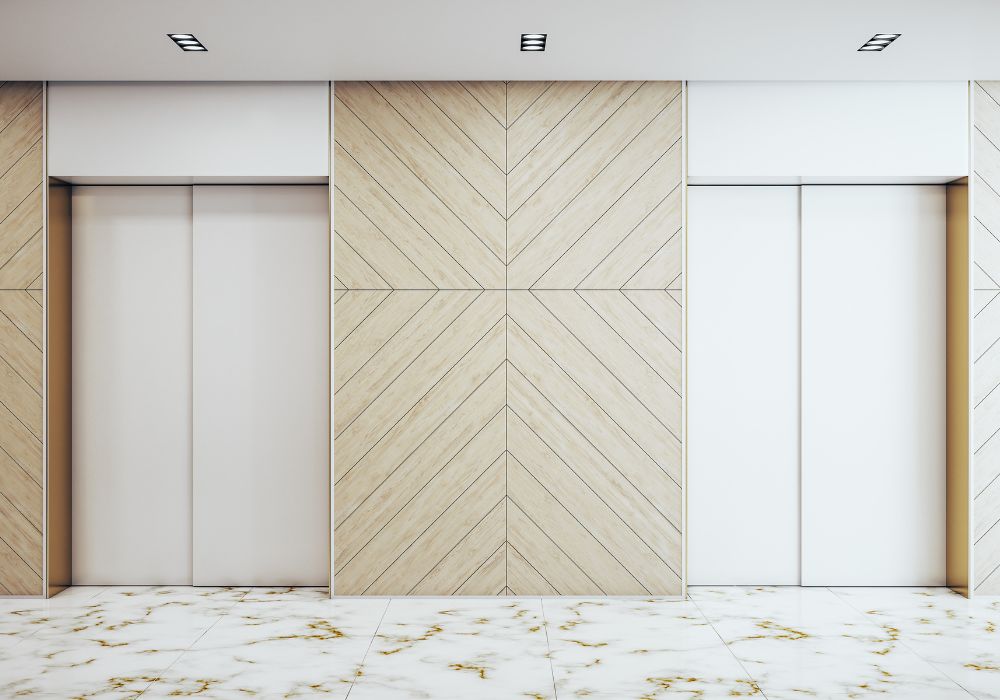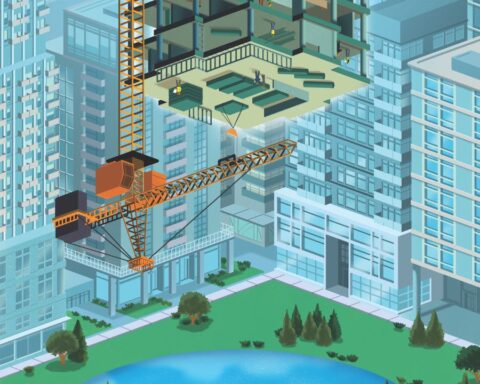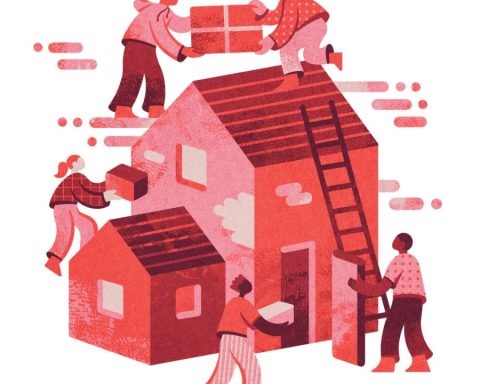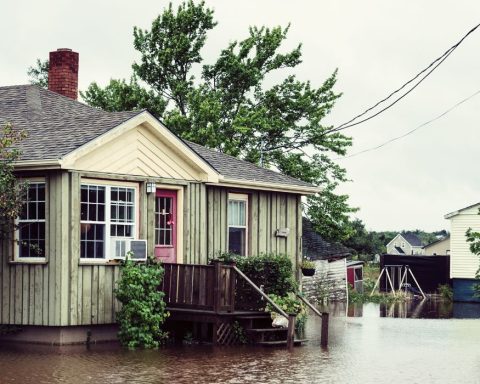Elevators are, arguably, the quintessentially liminal spaces within big cities – those mostly unprepossessing boxes that shunt us between floors in apartment buildings and offices. Some versions, typically in higher-end commercial towers, have certain tech-y features – a digital screen with a cable news crawl or a smart floor-selection feature. For the most part, however, contemporary elevators have little to outwardly distinguish one from the next besides their size and finishes. The brushed-aluminum doors open, you get on, press a button, and off it goes.
Yet these workhorses of our vertical transportation systems – Americans make 20 billion elevator trips per year – are anything but generic. Indeed, the extraordinarily elaborate industrial and regulatory structure baked into the ordinary elevator plays an outsized role in explaining one of the more perplexing riddles of the built form of global cities, which is this: why do North American cities produce far more tall-and-sprawl development, whereas urban regions in other parts of the world typically feature extensive tracts of mid-rise buildings that beget denser and more sustainable neighbourhoods?
The answer, or at least a significant part of it, can be found in an eye-opening May 2024 deep dive on the state of the global elevator sector, published by a Brooklyn think tank called the Center for Building in North America. Written by its executive director, Stephen Smith, the report unpacks why North American elevators are on average three times more costly than their European counterparts – a price divergence that has enormous implications for built form. The United States and Canada also have fewer elevators per capita than any other high-income country.
“High-income countries with strong [labour] movements and high safety standards from South Korea to Switzerland have found ways to install wheelchair-accessible elevators in mid-rise apartment buildings for around $50,000 each, even after adjusting for America’s typically higher general price levels,” the report finds. “In the United States and Canada, on the other hand, these installations start at around $150,000 in even low-cost areas.”
The elevator question has taken on much more salience in the past few years as big cities across North America juggle severe housing shortages and sustainability-driven efforts to intensify residential neighbourhoods by allowing multiplexes and low-rise apartment buildings amidst huge swaths of detached houses. While some cities – such as Seattle and New York – still permit the construction of walk-ups without elevators, such dwellings limit accessibility for people with disabilities, seniors and young parents. What’s more, the high cost of North American elevators has made retrofitting those older buildings financially unfeasible – a problem older apartments in Europe do not face.
Smith’s study shows that North America has hewed to a largely outdated form of elevator regulation, whereas the rest of the world in the late 2000s adopted a far more flexible European technical standard that allows builders to install or retrofit elevators in low- and mid-rise buildings far more easily and inexpensively than is the case in the U.S. and Canada.
In Canada and the U.S., the average number of apartments served by a single elevator now exceeds 100. In Europe, the ratio is far lower, at about 30, at least in part because most European jurisdictions allow the construction of “point access block” apartment buildings, which are configured around a single winding staircase and tend to be lower and squatter. Smith points out that even in very small multi-family buildings in much of Europe, with only one or two dozen units, it’s not unusual to have multiple elevators.
RELATED:
- How a wave of developers turning office buildings into apartments could create more walkable cities
- Is the rush to build affordable homes putting them in the line of fire (and floods)?
- How today’s green building heroes are scaling up to save our planet
Smith himself became acutely aware of elevator access issues not long after buying a fifth-floor condo apartment in a newly built Brooklyn walk-up in 2017. He chose the building because of the low monthly maintenance fees. “I was an in-shape 32-year-old and had only ever lived in walk-ups in New York,” he wrote. “An elevator just seemed like an unnecessary cost.”
Yet soon after he took possession, Smith contracted a viral infection that produced a debilitating constellation of symptoms, including dizziness, extreme fatigue and nerve damage. Cycling became treacherous, and the climb up to his apartment turned into an arduous trek.
At the time, Smith was tuning in to the surge of interest among American urbanists and small builders in early efforts to increase density in cities like Minneapolis, whose council in 2018 made triplexes legal anywhere in the city and abolished parking requirements. Contractors responded, but often with low-rise apartments that lacked elevators. Yet through friends and relatives in places like Romania and Italy, Smith knew that in those jurisdictions, small-scale apartments routinely came fitted out with lifts.
Besides the yawning gap between the technical standards in North America and the rest of the world, Smith’s investigation uncovered a range of other factors that drive up costs in Canada and the U.S. These include chronic shortages of skilled workers who can build and maintain elevators and restrictive provisions in collective agreements between the major manufacturers – such as Otis and Thyssen – and the elevator trades. Case in point: while the manufacturers increasingly want to move production offshore and ship pre-assembled elevator components, contracts allow unionized workers to actually disassemble pre-assembled parts and then rebuild them on site, a measure meant to eliminate production efficiencies that could reduce jobs.
Regulations, especially around accessibility, also play a perverse role. North American rules specify minimum cab sizes to allow for turning radii for wheelchairs and stretchers. The result, overall, is fewer elevators and thus less accessibility, Smith found.
Finally, the technical specs in North America are less flexible and more complicated, and Smith argues that there’s a linear relationship between that complexity and cost. The cost helps drive development choices: builders want to go higher to recoup those investments, and consequently the elevators serve more people, receive more wear and tear, and are therefore down far more frequently. In high-density urban cores, like Toronto’s downtown, the results are elevator peak periods and lineups to get out the door.
Smith’s recommendations include a call for North American regulators to consider the high-level implications of ratcheting up safety and accessibility standards, which, evidence suggests, ends up leading to fewer elevators or elevator-accessible apartment buildings.
The report’s primary recommendation, however, is philosophical: North American regulators and standards-setting entities should seek to take a more international outlook, borrowing from what’s worked fine in most of the rest of the world. “In the absence of strong data on the inadequacy of international practices, deference should be given to what is tried and true in societies with far more – and far more affordable – elevators than North America,” the report says.







